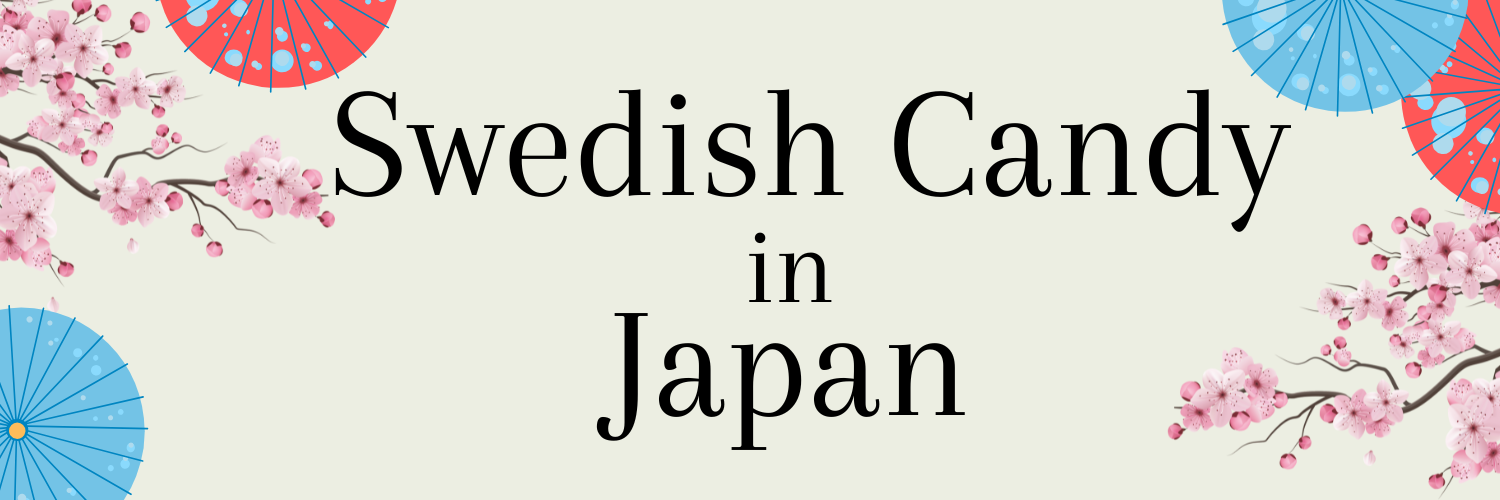In recent years, Japanese snack aisles and specialty shops have seen a surprising and colorful addition: Swedish candy. With its bold flavors, unique textures, and vibrant packaging, this Nordic treat has become something of a cult favorite in Japan. But what exactly is behind the growing love affair between Japanese consumers and Swedish sweets? Let’s unwrap the reasons.

1. A Shared Love for Quality and Craftsmanship
Japan and Sweden share a deep appreciation for high-quality, well-crafted products. Just as Japanese wagashi (traditional sweets) are made with attention to aesthetics and detail, Swedish candy is known for its premium ingredients and thoughtful flavor combinations. Many Swedish candy brands, like Bubs, Cloetta, and Malaco, emphasize natural colorings, Fairtrade ingredients, and often offer gelatin-free or vegan options—features that appeal to Japan’s increasingly health-conscious market.

2. Sour Candy Obsession
If there's one flavor profile that defines a large portion of Swedish candy, it's sour. Think S-Märke Sour , Djungelvrål (salty licorice), and intensely tangy fruit chews. Japan, too, has long had a fascination with sour flavors, from umeboshi (pickled plums) to suppai lemon candies. Swedish sour candies provide a familiar yet exotic thrill—pushing the boundaries of tartness in a way that excites adventurous Japanese palates.
3. Kawaii Packaging and Vibrant Colors
Swedish candy often comes in bold, playful packaging, with bright colors and cute shapes like skulls, hearts, or fruity rings. This aligns beautifully with Japan’s love for all things kawaii (cute). The aesthetic appeal makes Swedish sweets not just a snack, but a visual experience—perfect for gift-giving, social media sharing, or even themed candy cafes that are growing in popularity across Tokyo and Osaka
4. Nostalgia and Novelty
Japanese consumers are both highly trend-sensitive and sentimental. Swedish candy delivers on both fronts. It offers novelty—many people in Japan have never tasted salty licorice or foamy banana marshmallows before. But it also taps into the nostalgia of retro candy culture, which is huge in Japan. Chewy, colorful, and bite-sized, Swedish candies remind many of the sweets they grew up with—just with a Scandinavian twist.
5. The Influence of Pop Culture and Globalization
Sweden’s reputation for pop culture exports—ABBA, IKEA, and even the popular Netflix series like Young Royals—has given it a cool, minimalist-yet-edgy image. This global branding plays well in Japan, where international lifestyle trends are quickly picked up, especially by younger consumers. IKEA’s wide reach in Japan also plays a role: many customers are first introduced to Swedish candy at the checkout aisles of these Swedish megastores.
6. Healthier Candy Alternatives

Compared to many overly sweet or artificial candies in the global market, Swedish candy often positions itself as a more natural alternative. With reduced sugar options, vegan lines, and real fruit concentrates, these candies resonate with the modern Japanese shopper who is looking for "better-for-you" indulgences without sacrificing flavor or fun.
Ready to Try It Yourself?
Swedish candy may have started in the chilly north of Europe , but it’s now a warm favorite in Japan.
Bold sour flavors appeal to adventurous Japanese taste buds.
Playful designs and colorful shapes fit perfectly with Japan’s love for cute (kawaii) aesthetics.
Health-conscious ingredients like vegan options and natural coloring are a hit with modern snackers.
Cultural cool factor from Scandinavian trends adds to its popularity.
Whether you’re in Harajuku or a Japanese import store , don’t be surprised to find Swedish foam skulls or salty licorice.
🍬 You might just discover your new favorite sweet from Scandinavia .
What are the Swedish candy brands?
We've brought together many of Sweden's favorite candy brands, like Ahlgrens Bilar, Malaco, Candinavia, Candy People, Bubs, Marabou, and more.
Why is Swedish candy so popular?
Swedish candy is popular for several reasons that appeal to a wide range of candy lovers:
Unique flavors : Sweden is known for bold, adventurous flavors—especially salty and sweet licorice, and sour gummies—that stand out from traditional candy elsewhere.
Playful shapes and textures : Swedish candy often comes in fun, quirky designs like cars, skulls, and animals, making them both tasty and visually fun.
Quality ingredients : Many Swedish candy brands focus on using high-quality, natural ingredients with less artificial additives compared to other mass-produced sweets.
Balance of sweetness : Unlike overly sugary candy in some countries, Swedish candy often strikes a balanced sweetness that appeals to more refined palates.
Cultural tradition : The concept of “Lördagsgodis” (Saturday candy) is a cherished Swedish tradition, reflecting a mindful yet joyful approach to candy consumption.
Vegan and allergen-friendly options : Many Swedish candies are gelatin-free, gluten-free, or vegan, appealing to those with dietary restrictions.





